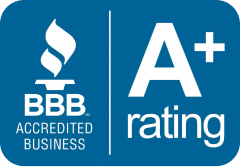Many seniors who are eligible for Original Medicare may find Medicare Advantage to be a terrific option, but first-time enrollees may find the options and plan limitations to be bewildering. The fact that most plans include time limits and unique requirements for enrollment in order to avoid coverage gaps or penalties for late enrollment only heightens the sense of urgency. It’s crucial to comprehend the enrollment process if you’re prepared to select a Medicare Advantage plan.
How and when to join in a Medicare Advantage plan is one of the key concerns seniors have on this subject. You have a 7-month window starting in the month you turn 65 and become eligible for Medicare benefits, to put it simply. Three months prior to your birthday month, the clock for this begins to run. It finishes on the final day of the third month after your birth month. As a result, if you reach 65 on July 10th, your enrollment period begins on April 1 of the year you are granted Medicare eligibility and concludes on October 31 of the same year.
This guide’s objective is to inform readers on the Medicare Advantage application procedure. The tutorial begins with an introduction of the Original Medicare programme before discussing the choices and deadlines for signing up for Medicare Advantage.
The Basics of Medicare
Knowing the fundamentals of Original Medicare and the various components that the majority of beneficiaries must deal with before enrolling in Medicare Advantage might be helpful. Medicare is divided into various components, each of which offers health insurance for various services:
Medicare Part A
The foundational insurance that Medicare offers its participants is known as Part A. For qualified seniors, this free coverage covers the expense of inpatient hospitalisation. Since Part A has no deductible or monthly premium, all U.S. citizens are immediately enrolled in it when they are eligible. Hospital admissions and treatments given as part of routine inpatient care are the main services covered by Part A. Direct billing from providers to the Original Medicare programme results in payment for services on a predetermined or negotiated schedule. Unless the patient has a Medicare Advantage plan that offers the same coverage, all Medicare-qualified providers are required to bill only Medicare for covered treatments and are therefore a part of the Part A network.
Medicare Part B
Medicare Part B coverage is comparable to Part A coverage, however it only applies to outpatient treatments. This is the price of some specialist care as well as doctor office visits. Services delivered under Part B may be subject to a portion of cost or other expenses, in contrast to Part A. The average monthly premium for certain Part B plans is $28. Enrollment in the plan is not automatic like it is for Part A because the majority of recipients must pay for this coverage. Seniors who qualify for Medicare have the option of alternative coverage, which is often supplied by a private insurance company.
Medicare Part D
A prescription drug coverage programme known as Medicare Part D assists in covering the majority of participants’ medication costs. There is no standard pricing for this plan because Part D coverage quantities and costs differ significantly among beneficiaries and geographical areas. If they have chosen a private insurer, some seniors’ Part B plans frequently include Part D coverage.
Medicare Part C
The type of coverage that seniors can purchase for themselves on the private insurance market is referred to as Part C, even though it is not officially a part of Original Medicare. Part C plans frequently contain a few extras that may not have been covered under Original Medicare in addition to the minimal coverage beneficiaries receive under Parts A and B. Expenses for transportation, durable medical equipment, and spectacles are a few examples of additional coverage. A prescription drug coverage that matches Medicare Part D is also included in some Part C plans.
Part C deals with Medicare Advantage plans. When seniors reach Medicare eligibility, they can enrol in a Medicare Advantage plan through a state-approved provider and receive combined coverage for hospital stays, doctor visits, prescription drugs, and any additional benefits they feel they require to cover particular medical needs, such as eye exams and physical therapy. Prices and coverage limits are as flexible as the private market will allow them to be, and you should carefully investigate every plan before deciding to purchase it because specifics might change even within the scope of one insurance provider’s options.
Medicare Supplement Plans
Although they are not a direct component of the Medicare system, Medicare supplements are a result of it. There may be coverage gaps that exclude specific services whether you have Original Medicare or Medicare Advantage. High copayments and additional out-of-pocket costs for services not covered by their Part C plan are additional challenges for many seniors. Medicare supplement plans offer a range of coverage options to fill these coverage gaps. These are incredibly variable, so you must evaluate each plan with an insurance representative to be sure the coverage is sufficient for your circumstances.
Medicaid is frequently utilised as a free or inexpensive Medicare supplement. This is the government’s low-income health insurance programme, which offers fundamental medical care to persons of all ages who might not otherwise be able to buy a private insurance plan. Every state has strict restrictions on assets and income, and some Medicaid plans try to recoup costs from members’ estates after they pass away. Make sure to go over the specifics with a Medicaid intake specialist in your state if you believe you could be eligible for the Medicaid supplemental plan.
How to Enroll in Medicare Advantage
Medicare Advantage coverage is not a given, and you must voluntarily enrol in whatever plan you choose for your Part C benefit. The enrollment procedure for these plans is the same as that for any other insurance product offered by commercial insurance carriers.
Your first choice for signing up for a Medicare Advantage plan is to go directly to the private provider and do so. If you already know the firm you’re interested in and which plan you want to enrol in, this straight approach works really well. However, because it can be challenging to compare coverage options in this manner, many seniors consider purchasing their Medicare Advantage from a third-party marketplace.
The majority of states provide rather straightforward internet resources for contrasting Medicare Advantage plans that are offered locally. You might need to enter your address in order to discover a plan that can meet your needs because some are restricted to particular cities or counties. Such online tools often ask you about the exact coverage you require as well as the prescriptions you are currently taking and want to be covered for. Only in order to assist you in locating a plan that meets your needs is this data obtained.
You cannot, by law, be denied Medicare Advantage coverage due to a preexisting condition or the general status of your health. Depending on these factors, as well as unhealthy behaviours like smoking, you might have to pay more for Medicare Advantage coverage in 47 states, but in Massachusetts, Wisconsin, and Minnesota, the law requires all insurers to offer rates based solely on geographic area, not on individual factors like these.
When to Enroll in Medicare Advantage
To help spread out the cost of providing medical care, Medicare Advantage providers put their clients into risk pools. In order to make the risk pool become homogeneous and predictable, businesses urge all members to sign up and pay their monthly premiums in a predetermined time frame. It is possible to purchase a Medicare Advantage plan outside of the designated enrollment periods, but many seniors who sign up after the deadline frequently pay a penalty in the form of higher costs or reduced coverage. Knowing when you can enrol in your preferred plan without incurring fines is therefore especially crucial.
The Initial Coverage Election Period (ICEP)
The initial coverage election period is when the majority of Medicare Advantage plan purchasers make their decisions (ICEP). This spans the three months prior to and three months following your birth month. Although there is no expense associated with signing up during this time period, it is strongly advised to do so as soon as possible. This is because any Part D-related plan typically takes three months to take effect, so if you enrol after your birthday, there may be a little lapse in your medication coverage. As a result, it’s important to start your research before the ICEP and get the forms in before the first day of the month you turn 65. This gap could persist for up to three months beyond the time you lose the coverage you had before switching to Medicare.
Medicare Advantage Annual Election Period
It is not at all unusual for seniors who have just begun receiving Medicare benefits to initially choose Original Medicare and then change their minds later to choose a Medicare Advantage plan. You can do this without paying a penalty rate if you time the transition for the annual election period. Every year on October 15, or the start of the fourth quarter for the majority of insurance providers, the Medicare Advantage annual enrollment period begins. The provider has until December 7 to complete the risk pool before the new year because the registration session is ending on that day.
Medicare Advantage Special Enrollment Period
Sometimes circumstances force beneficiaries to enroll in Medicare Advantage outside of the normal enrollment periods. This can be tricky to do without incurring a penalty rate, but there are special circumstances you can invoke to justify an out-of-period enrollment. Special situations examples include:
- Changing providers due to moving from one coverage region to another
- Loss of previous protection, such as when an employer’s insurance ceases with the employment (COBRA coverage is NOT considered coverage from employment for this purpose)
- Uncontrollable modifications to your previous insurance, like a rate increase or benefit cutback
- Release from a facility for offenders
- Loss of coverage brought on by a federal employee, such as when you receive incorrect information or are wrongly persuaded to choose an alternative to the coverage you require.








